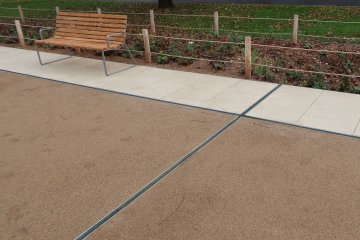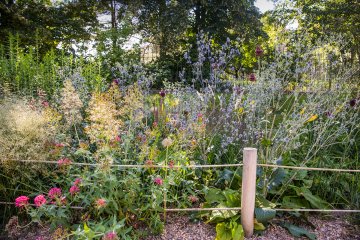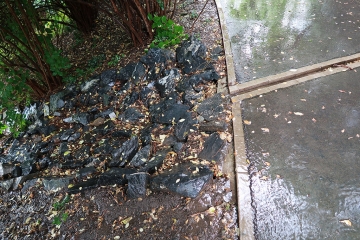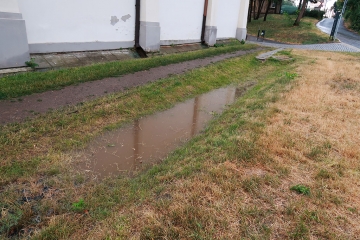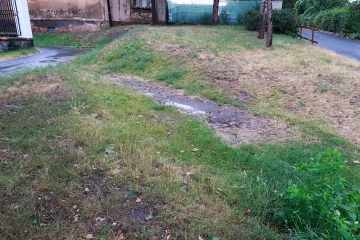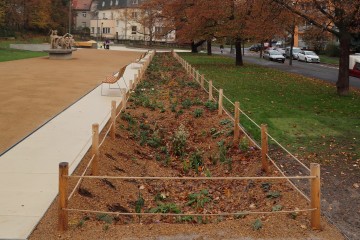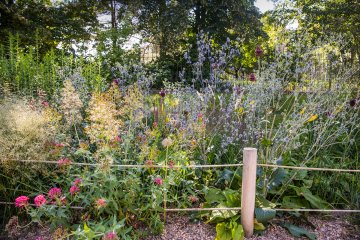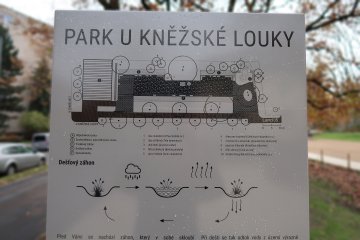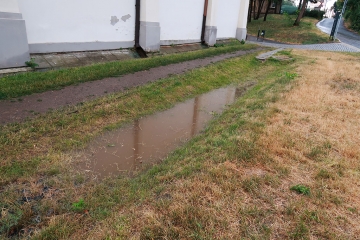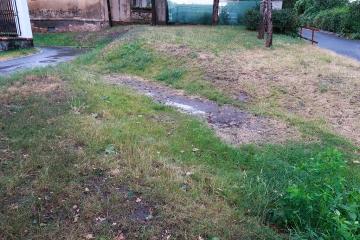How to keep water at the point of impact?
In recent years, dry summers have come and, together with high temperatures, result in drying out of the soil. It is not able to effectively absorb water during torrential rains. Plants need water for their growth and we also need it to cool the environment (in the form of natural evaporation). The method of managing rainwater depends on specific locations and the possibilities of rainwater. Now we will present you how we approach rainwater management. A generally valid method is the rebuilding of impervious surfaces (asphalt, etc.) into permeable surfaces (absorbent or grassy paving, lawns, etc.), most often it involves the creation of retention spaces, where water is retained, or the construction of storage spaces, where we create a supply of water for its later use.
Accumulation tanks at family houses
You can water with rainwater in the dry season or use it in the home (e.g. for flushing) thanks to the fact that we retain it in storage tanks. These tanks are the ideal solution for family houses with a garden, and HDV thus has a direct financial effect. We usually build tanks underground, where they do not interfere with us, at the same time the water is retained in the cold and dark and does not spoil.
In 2021, an amendment to the law entered into force, which obliges all owners of new buildings to collect rainwater directly in the place where it falls, i.e. on the land. It makes you think about how to use rainwater.
Green roofs
Green roofs are vegetation multilayer systems with high water retention capacity. In addition, they have an aesthetic benefit, and in addition to retaining water runoff, they perform other functions in the form of cooling buildings, providing grazing for small animals (especially insects), reducing dust, increasing the efficiency of photovoltaic panels, etc. Here, it is necessary to take into account the slope and construction of the roof due to load. We then divide the roofs into extensive and intensive according to the strength of the substrate and the type of vegetation.
Retention of rainwater in the city
As for the possibilities of retaining rainwater in the urban environment, we try to use as much as possible, so-called structural substrates, which are able to hold a large amount of water. The substrate then gradually releases the water both for the plants and evaporates it back into the space, which cools it down. In cities, we also use so-called rain beds, which are able to hold a large amount of water during torrential rains. Beds can be modeled in the field - create depressions and plant them with precisely selected plants that, thanks to their life strategy and storage organs, can withstand longer-lasting drought, but also short-term waterlogging. In this way, we try to ensure that as little water as possible goes into the sewer system, but that, on the contrary, as much as possible remains in the given place for the needs of the plants and for evaporation. HDV represents one of the important elements of the blue-green infrastructure of cities, which contribute to the adaptation of cities to climate change.
The rain beds within the U Kněžské louka park capture a large amount of rainwater, even in the event of torrential rains. Thanks to the gravel substrate, the water soaks in gradually and thus remains available to the plants.
Working with rainwater on a slope
On steep slopes, we use a system of grass or gravel beds and other retention surfaces using substrates based on gravel layers. In addition to retaining rainwater for vegetation needs, these measures are important to slow surface water runoff and thus prevent slope erosion. The rapid flow of water can disrupt roads or wash away soil and vegetation.
Take a look at the Thomayer Orchards project, where we combined HDV on the slope with anti-erosion measures in the form of stone gutters and cascades.
